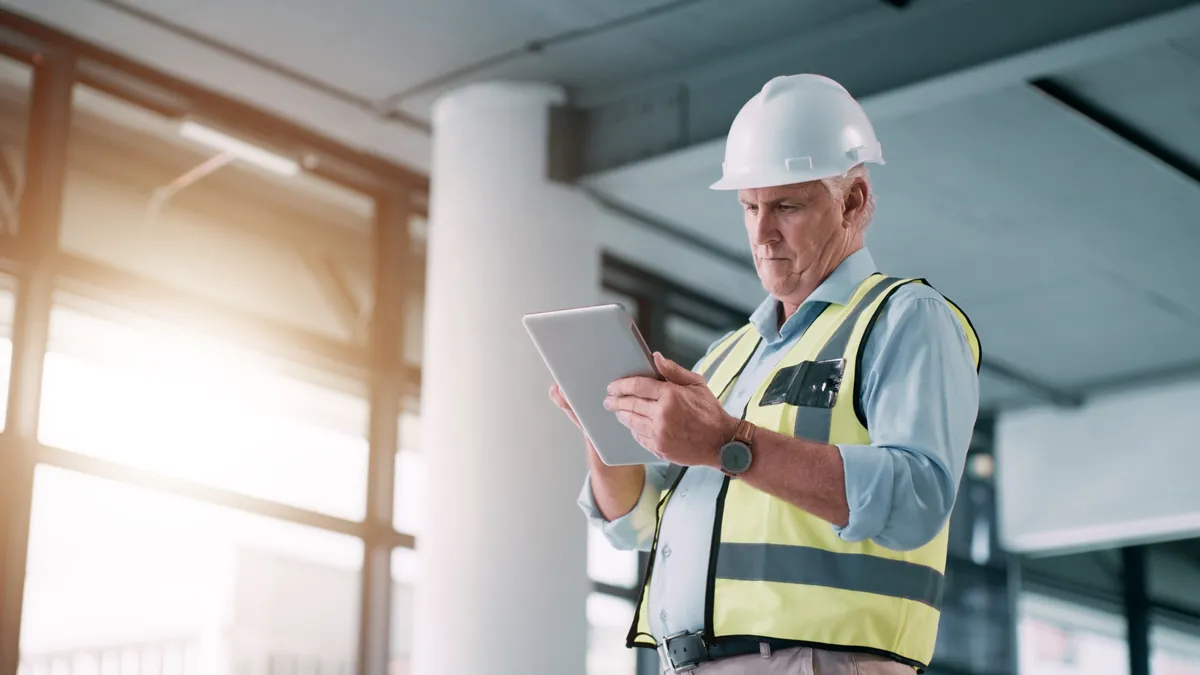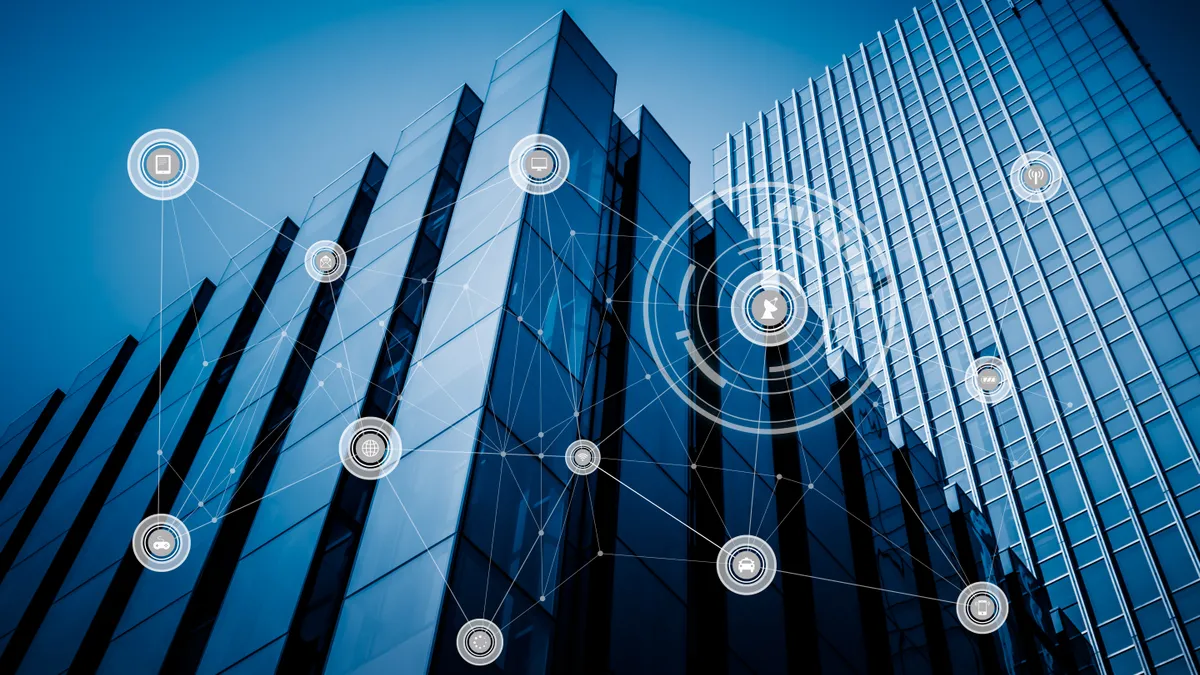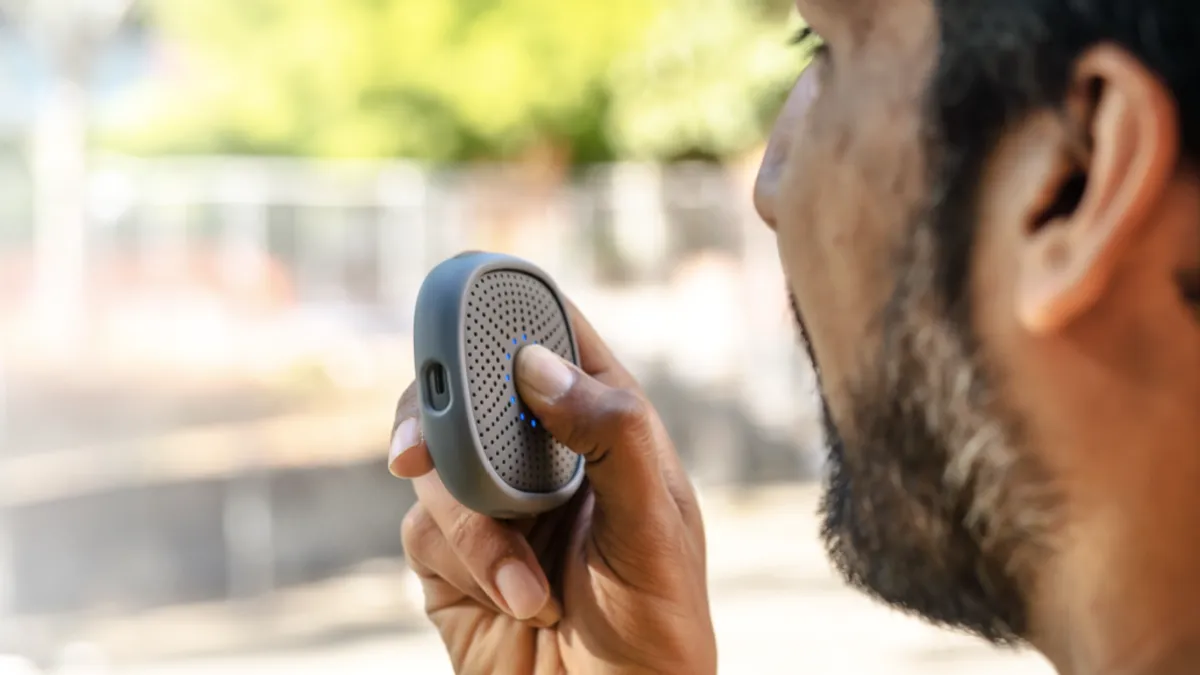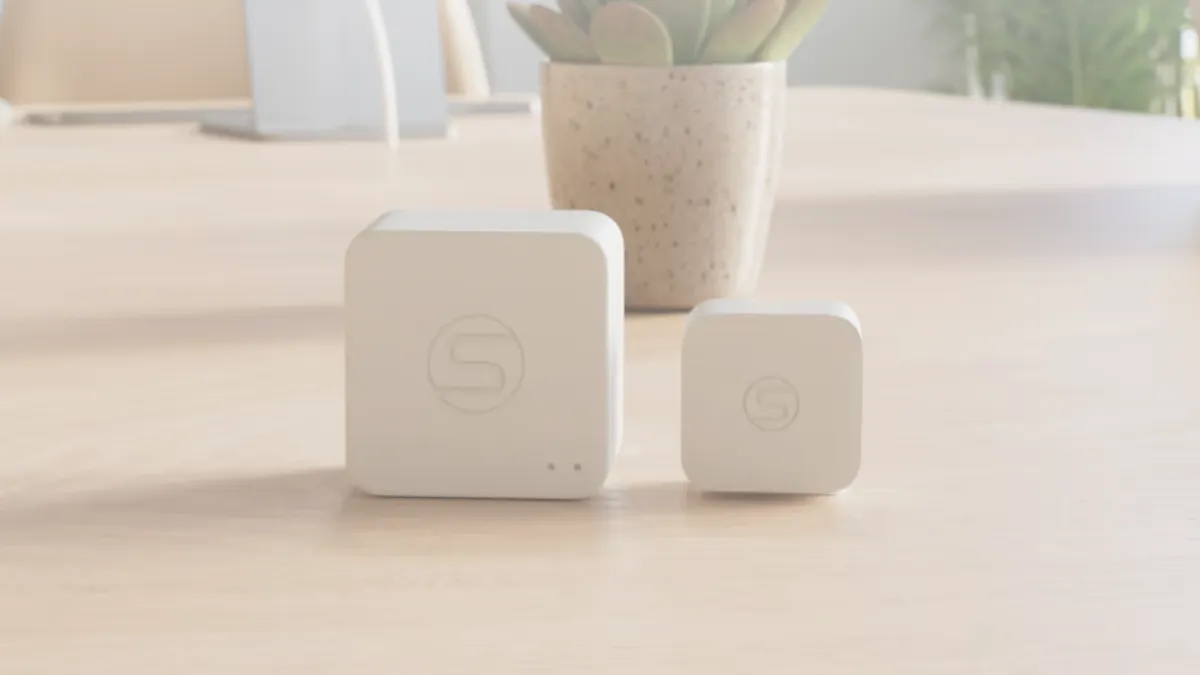Internet-of-things and smart building technologies are increasingly important to building operators as they seek to achieve sustainability, security, health, space optimization, maintenance and operational goals, with many businesses relying on building data to inform decisions, according to a September report by Johnson Controls.
Optimizing space management was a key investment driver for 41% of 3,445 smart building leaders surveyed last August in a study conducted by Forrester Consulting and commissioned by Johnson Controls. Forty percent of respondents named modernizing buildings as a key driver, while 39% highlighted carbon emission reductions, according to that survey.
The market for smart building technology “is moving in the right direction very quickly, and I think that starts with the infrastructure. The infrastructure and the movement from IT to OT convergence,” Erin McDannald, CEO of Elevated, which provides smart lighting and IoT solutions, said in an interview. “There's a lot of talk in the industry right now about the integrated workplace management systems meeting operation technology and those two converging.”
To better serve operators seeking insights that can drive decision-making and automation in their buildings, smart technology vendors are working to bolster their capabilities and expand their market presence.
LG CNS expands into US building technology
LG CNS announced its entry into the U.S. buildings technology sector on Dec. 2. The South Korean digital transformation company that is part of LG signed a memorandum of understanding with U.S.-based real estate investment and development fund SomeraRoad and Mastern America, the U.S. branch of Korea’s alternative investment company Mastern Investment Management.
The three corporations will collaborate on smart real estate initiatives, incorporating digital transformation technologies like AI, IoT and automation to transform building management efficiency and enhance user experience, according to a news release. These capabilities include services for employees, visitors and managers of smart buildings, such as mobile access cards or digital employee IDs that provide greater convenience for security and payments. Additionally, LG CNS’ content management system enables “simultaneous delivery and management of various types of signage in large buildings,” per the release.
The initiative will focus on developing smart technology into SomeraRoad projects, including hotel and luxury condos and multifamily residential properties within mixed-use projects in Kansas City, Missouri; Nashville; and other locations, the companies said.
Amerlux rebrands as Delta
Last week, commercial lighting manufacturer Amerlux, which is a wholly owned subsidiary of Delta Electronics, announced a strategic shift to better serve building operators with smart and sustainable building solutions, legally renaming itself as Delta Intelligent Building Technologies.
Despite the name change, Amerlux will continue to operate under its original brand, focusing on architectural lighting fixtures. Other Delta Electronics subsidiaries, including Delta Controls and Loytec will continue providing building automation, according to a Dec. 2 news release.
The integration aims to strengthen Amerlux and Delta’s positions in the North American building automation sector, enhancing sales, system integration and customer service capabilities, the companies said. According to the release, the move is part of Delta’s vision to create an integrated ecosystem of advanced technologies that can meet the evolving needs of modern building management.
Akenza works to bridge BMS, IoT
As facilities look for smarter ways to manage and optimize operations, integrating building management systems and IoT provides actionable insights that can help operators and facilities teams simplify building management, according to IoT platform Akenza.
Last week, the company announced the launch of its Building Edge solution designed to bridge the gap between BMS and IoT for enabling intelligent, efficient and sustainable building operations. The new platform combines traditional wired BMS systems and wireless, battery-powered sensors into a unified platform, standardizing data points and providing operators with a cohesive view of their facilities, Akenza said in a Dec. 3 news release.
“By integrating the akenza Building Edge, building operators can transition from isolated systems and fragmented data toward a comprehensive, cohesive view of their facilities,” Akenza said. “This shift not only simplifies building management but also empowers sustainable and efficient decision-making.”






















